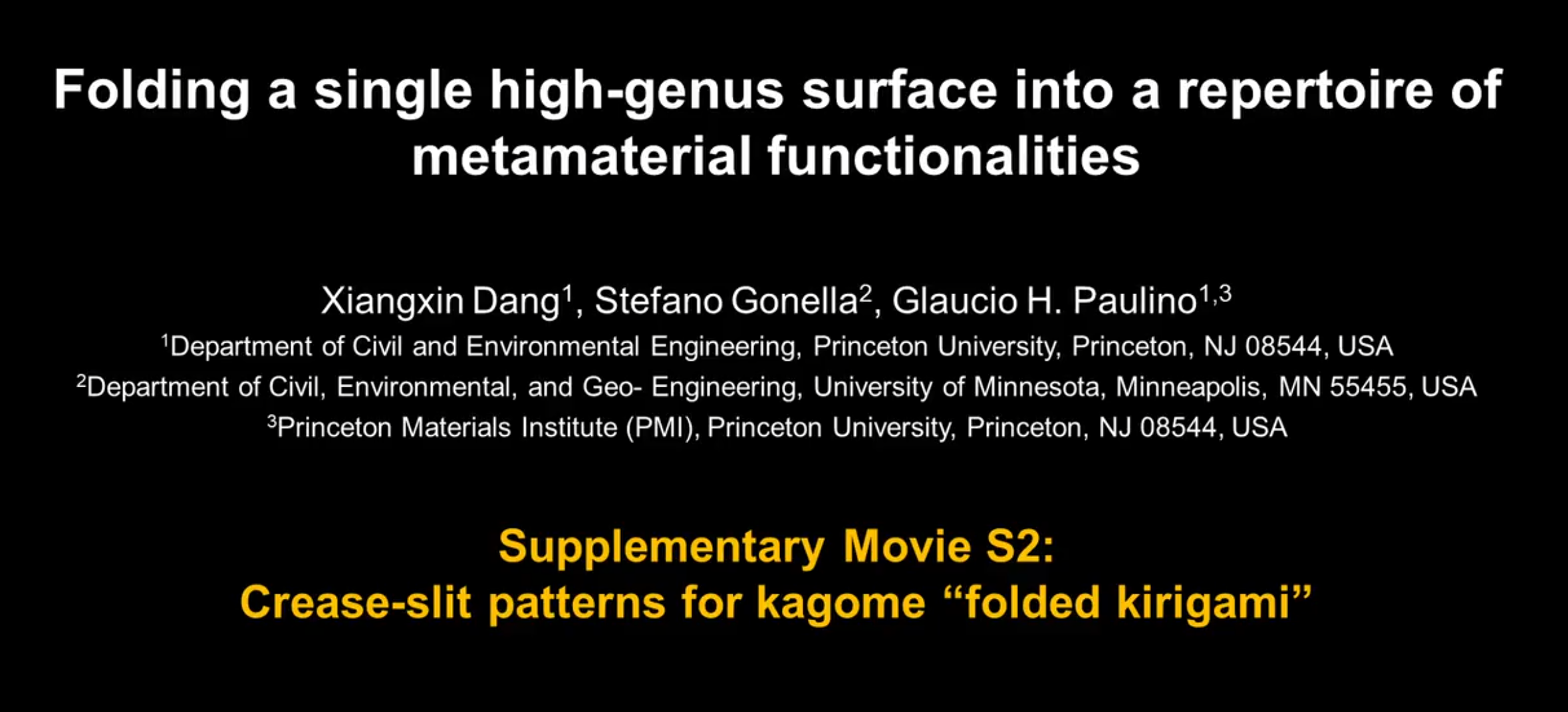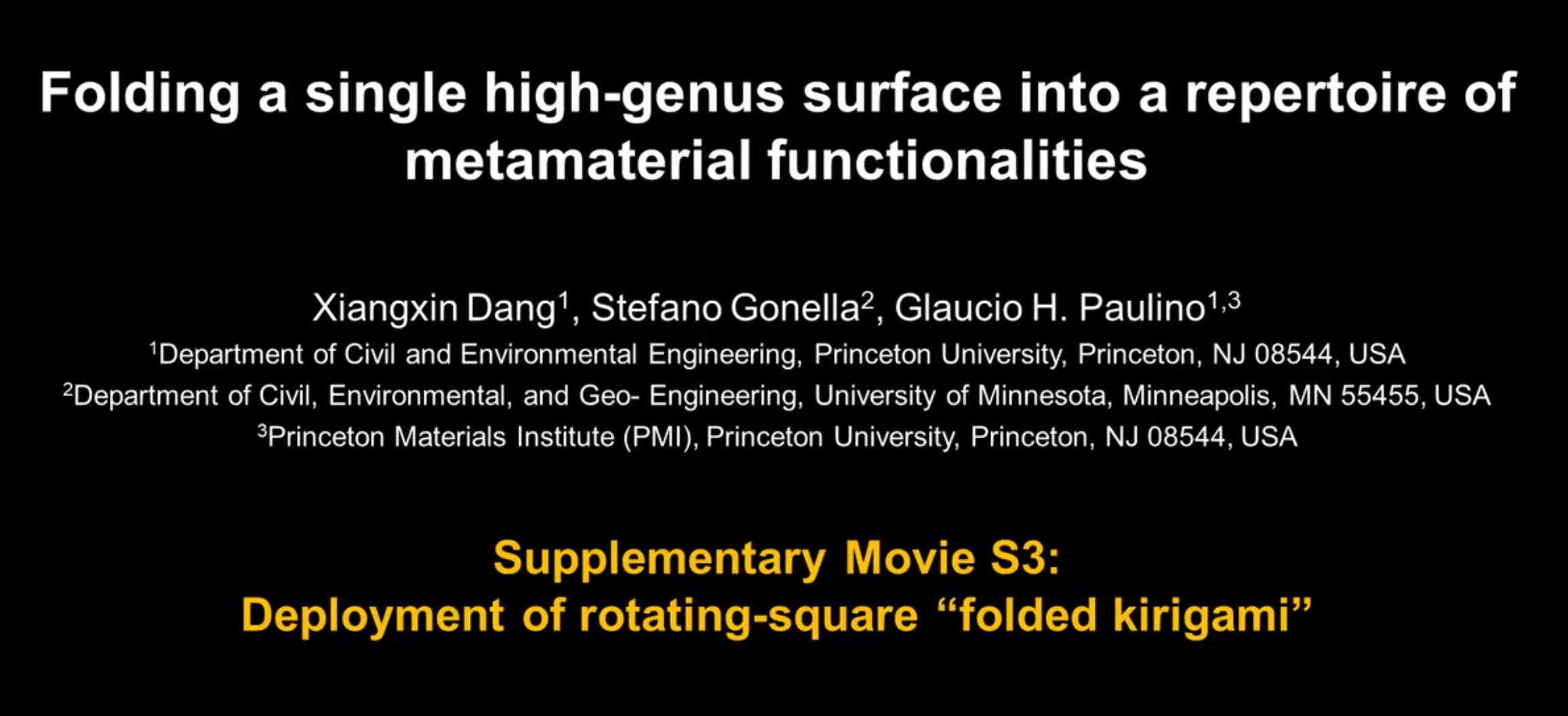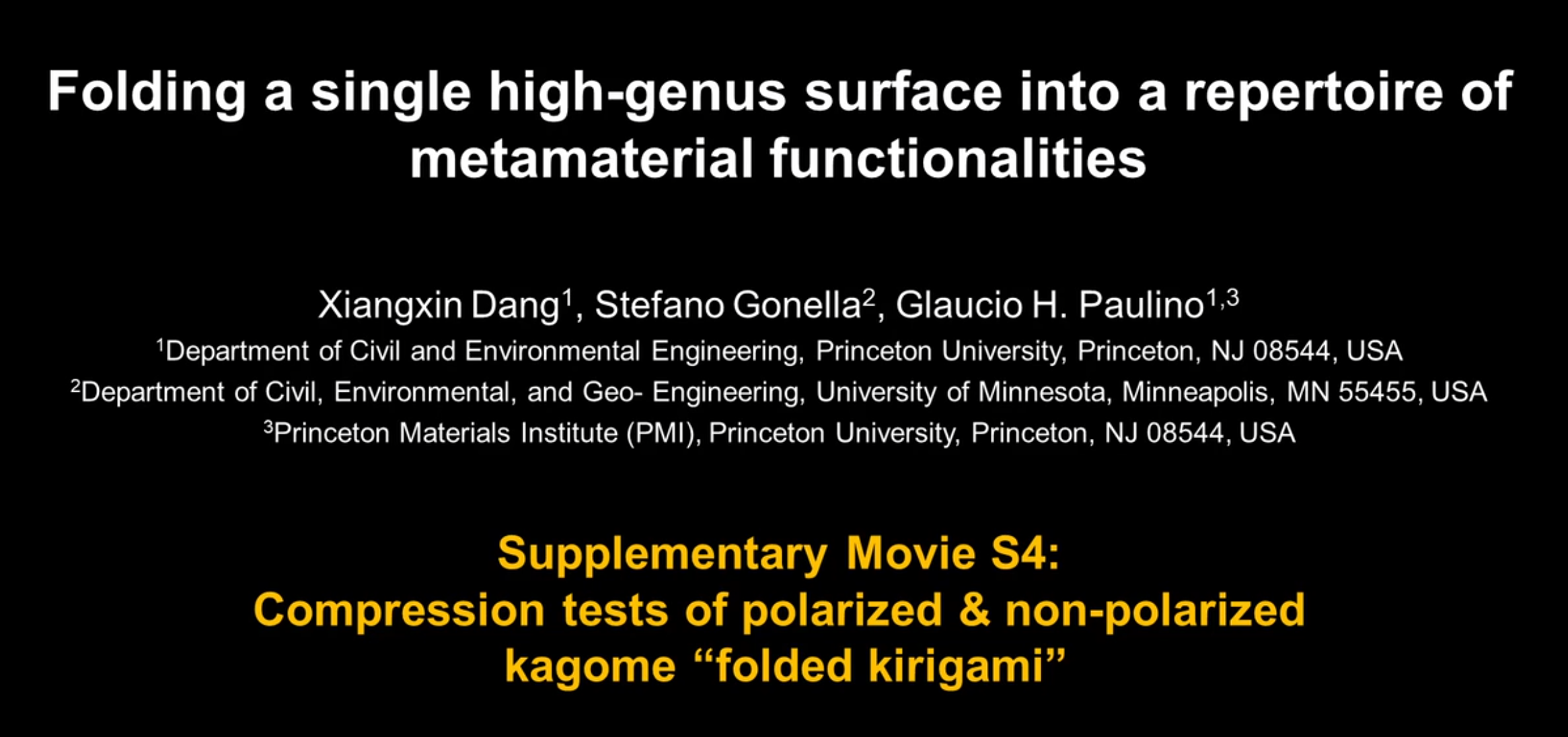Folding a single high-genus surface into a repertoire of metamaterial functionalities.
Xiangxin Dang, Stefano Gonella, and Glaucio H. Paulino
The concepts of origami and kirigami have often been presented separately. Here, we put forth a synergistic approach—the folded kirigami—in which kirigami assemblies are complemented by means of folding, typical of origami patterns. Besides the emerging patterns themselves, the synergistic approach also leads to topological mechanical metamaterials. While kirigami metamaterials have been fabricated by various methods, such as 3D printing, cutting, casting, and assemblage of building blocks, the “folded kirigami” claim their distinctive properties from the universal folding protocols. For a target kirigami pattern, we design an extended high-genus pattern with appropriate sets of creases and cuts, and proceed to fold it sequentially to yield the cellular structure of a 2D lattice endowed with finite out-of-plane thickness. The strategy combines two features that are generally mutually exclusive in canonical methods: fabrication involving a single piece of material and realization of nearly ideal intercell hinges. We test the approach against a diverse portfolio of triangular and quadrilateral kirigami configurations. We demonstrate a plethora of emerging metamaterial functionalities, including topological phase-switching reconfigurability between polarized and nonpolarized states in kagome kirigami, and availability of nonreciprocal mechanical response in square-rhombus kirigami.
View Full Text (PDF)
View Supporting Information (PDF)
Direct Link to Journal






